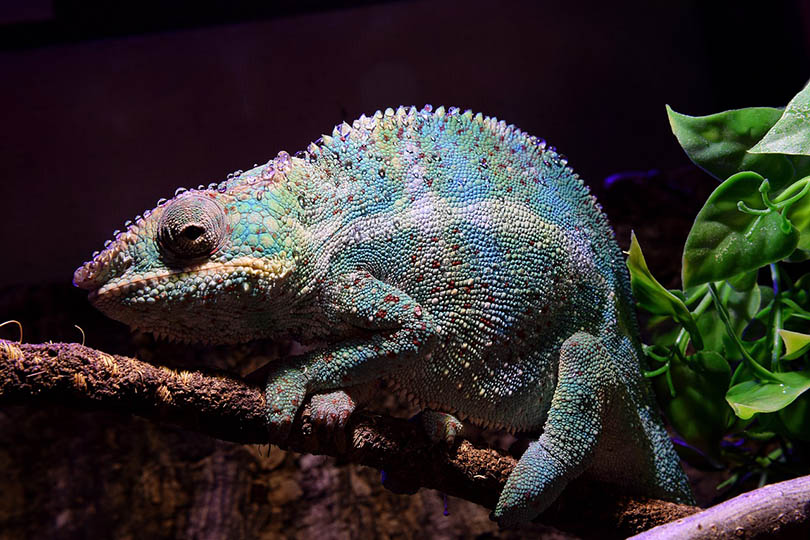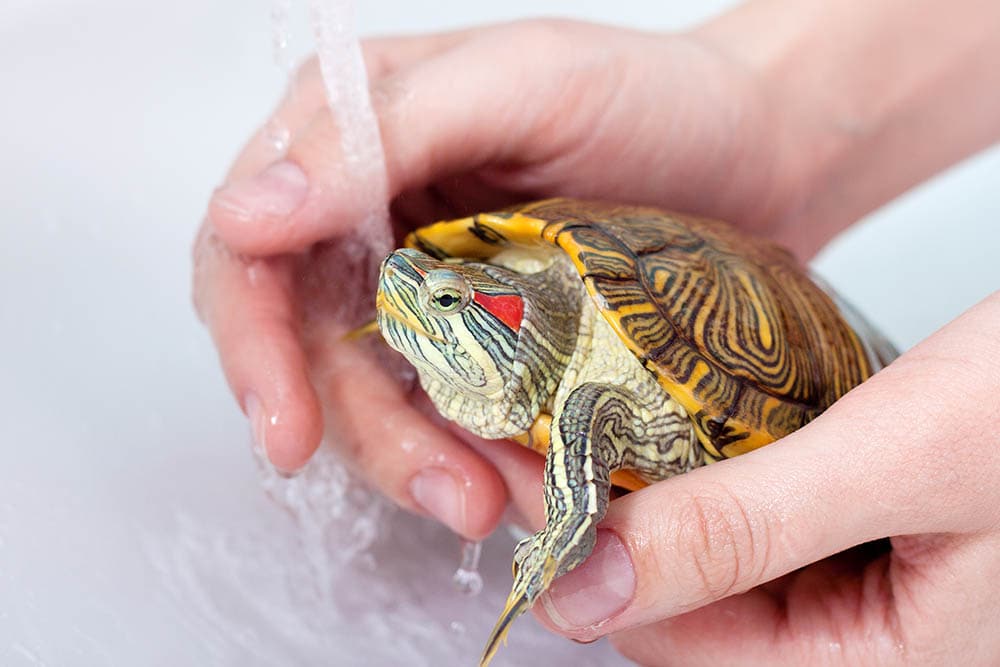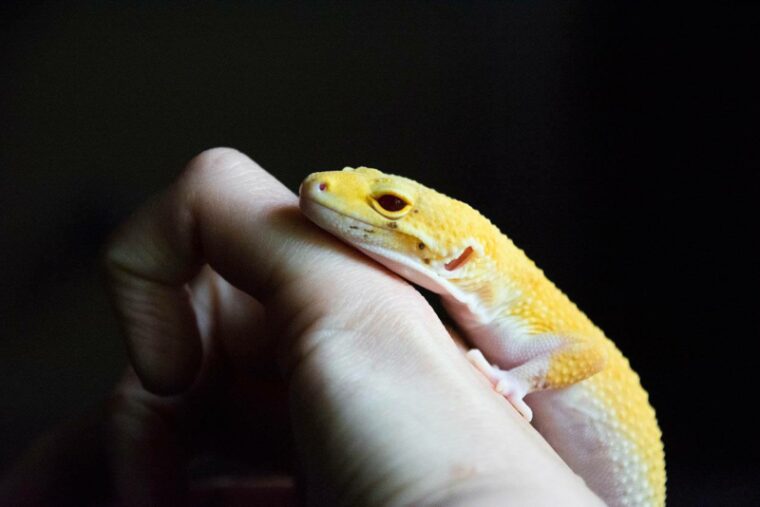
About 6 million American households have at least one reptile in their homes.1 While reptiles aren’t an animal you cuddle, a certain allure exists with having one that attracts many to the hobby. They are often more challenging to keep than other pets. Their needs are quite specific, particularly with temperature. Then, there is their food. People don’t usually welcome the idea of purposely bringing insects or rodents into their homes. Some reptiles adapt to captive situations more easily than others.
Thankfully, our list covers some of the most easy-going reptiles of the bunch. If you’re a beginner reptile keeper, the animals below might be the best place for you to start.
The 10 Best Pet Reptiles for Beginners
1. Green Anole

The green anole, or what some people call the chameleon, is about as easy as it gets. It can change color like a true chameleon. The lizard will do well in an aquarium on a diet of mealworms and crickets. It’s ubiquitous in the Southeastern United States. Your home setup should replicate the warm, humid conditions of its native land. It is an arboreal animal, so branches or driftwood are necessary.
The green anole is an excellent pet for children. It readily takes to handling and may even take food from your hands. You should avoid picking it up by the tail. It may break off as a defense response to predators.
2. Leopard Gecko

Geico Insurance probably has made the leopard gecko a household name. This lizard is an excellent choice for novice pet owners because it’s docile and tolerates handling. It’s a bit larger than the green anole and, thus, will need a larger cage. It also feeds on insects. This reptile is relatively small and nocturnal. It’s also long-lived for an animal of its size, with a maximum longevity of 28.5 years.
Surprisingly, this animal can be quite vocal, mainly when hungry. It also uses its tail to communicate. It flips it back and forth as a warning that it’s about to strike.
3. Bearded Dragon

The bearded dragon looks ancient and fierce. Yet, it is easily tamed. You’ll need at least a 55-gallon tank to house this reptile. It requires warm temperatures over 85℉ to replicate its native land of Australia. Its diet varies with age. Young animals will thrive on insects. Adults are opportunistic omnivores. They eat plants and fruits. In the wild, they’ll take the occasional small lizard or rodent.
It gets its name from the ring of spines around its neck. The lizard raises them if it feels threatened. Otherwise, it is a gentle pet that rarely bites.
4. Green Iguana
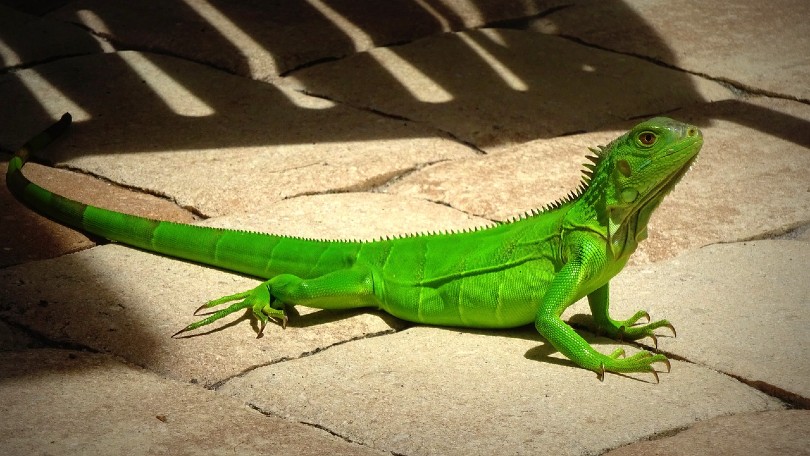
The green iguana is another prehistoric-looking reptile. It is on the edge of being a beginner pet because of its size. It can get up to 6 feet long as an adult. It’s also an arboreal animal, so you can see the challenge of keeping one in your home. This reptile eats insects when young to satisfy its protein needs for growth. It segues into an herbivore as it ages.
This animal is the most challenging on our list because of its specialized care. It requires frequent handling to keep it tame. An irritated reptile won’t hesitate to scratch or bite.
5. Ball Python

The ball python is an excellent choice for someone who wants to have a snake for a pet. It is a gentle animal that only gets about 4 feet long. An aquarium heated with a UVB light will provide an ideal home. The animal feeds primarily on rodents in the wild and captivity. The snake goes through dormancy periods where it may not eat. Otherwise, it is low maintenance.
This python is a constrictor. It uses these muscles to roll into a ball if it feels threatened, hence its name.
6. Rosy Boa

The rosy boa is an excellent choice for a beginner because it’s such a docile animal that doesn’t get very big. It is native to the Southwestern United States and Mexico. It is relatively long-lived, living up to 30 years in captivity. These snakes prefer the hot temperatures of their native habitat. You should also add rocks to the tank, although it may spend its days hiding in them.
This snake is a constrictor, as its name implies. Its stripes and white-tan body provide ideal camouflage in its native habitat.
7. Corn Snake
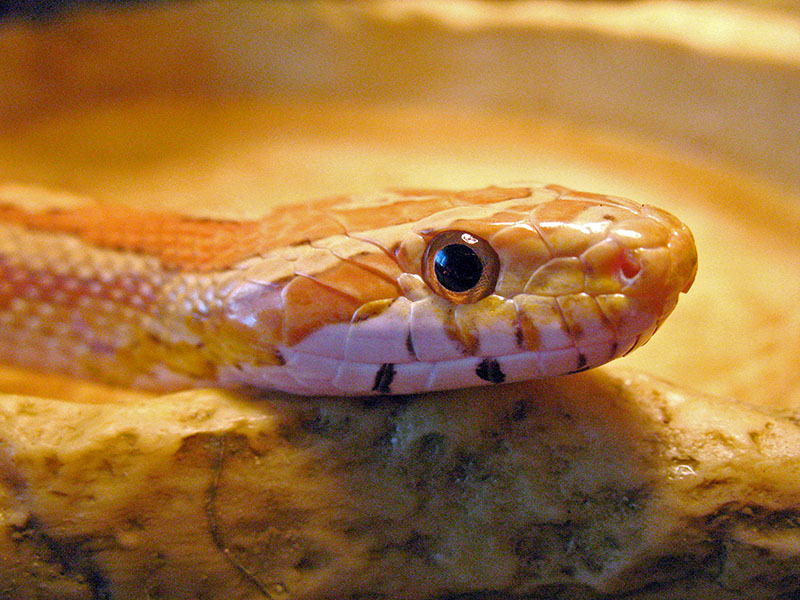
The corn snake is another long-lived reptile with a gentle disposition fitting for beginners. Regular handling will ensure your pet stays friendly. The animal is native to the Eastern United States. Therefore, you should replicate the climate of this area with your snake’s housing with warm temperatures and UVA/UVB lighting to help it thrive.
You may see this reptile called a rat snake. Either moniker is appropriate since it was named for its habit of hanging around corn granaries that attracted its favorite food, rodents.
8. King Snake

The king snake gets its name for its penchant for eating other snakes and being immune to rattlesnake venom. Therefore, you should keep this pet in its own cage. It’s an attractive animal with alternating bands of yellow and black. It’s bigger than the other snakes on our list, getting up to 6 feet long. It is a docile pet with regular handling. It also prefers warm temperatures. The king snake is active during the day.
9. Eastern Box Turtle
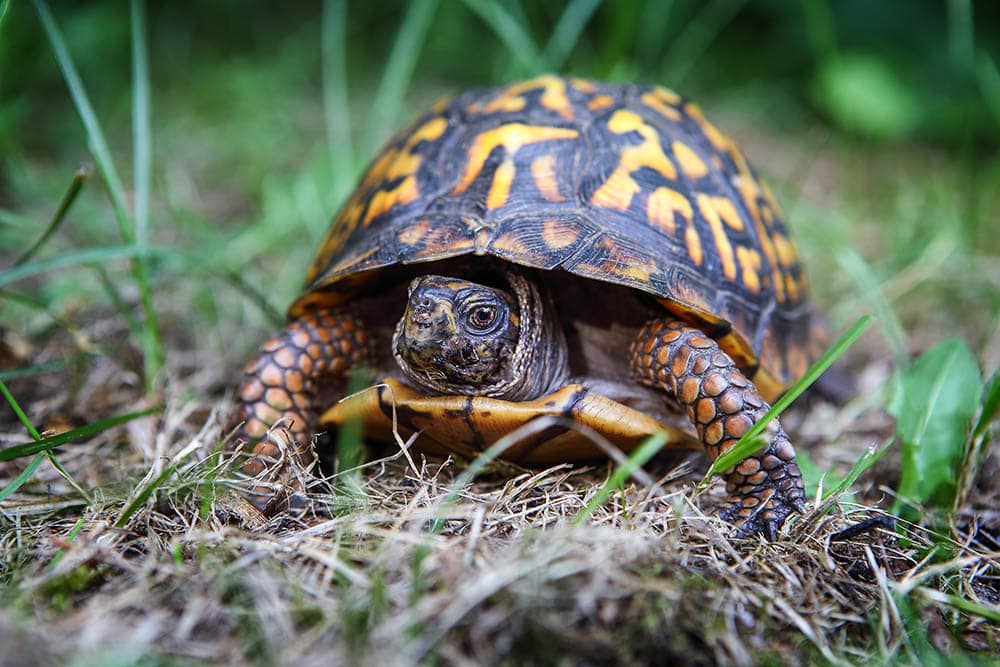
The eastern box turtle is a long-lived terrestrial animal that can live 40 or more years in the correct conditions. It’s truly a lifelong pet. This reptile isn’t as keen on handling as other animals on our list. Nevertheless, it’s still wise to do so occasionally to make it less stressful when you have to do it. It is an omnivore that can subsist on various foodstuffs, from vegetables to live insects.
This turtle usually lives in moist woodlands in the wild. You should replicate these conditions with humidity of at least 70%
10. Painted Turtle
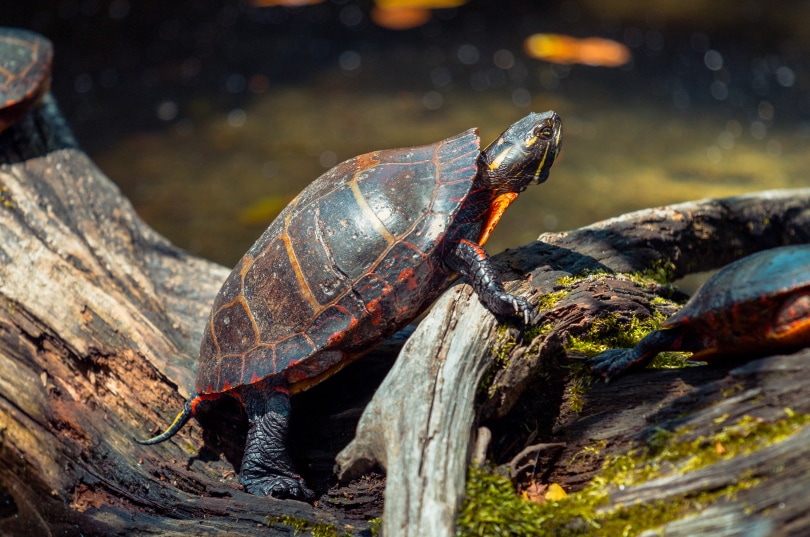
You won’t find painted turtles less than 4 inches long at pet stores because of the risk of Salmonella. Nevertheless, these reptiles make good pets with proper handling. They are aquatic animals that need a partially filled aquarium with a dry place to bask. You can feed them fresh leafy greens and a commercial diet supplemented with freeze-dried shrimp. Regular tank maintenance is imperative.
The same precaution regarding Salmonella applies to any reptile. We strongly urge you to wash your hands after handling your pet. Encourage your children to do the same.
Tips for Keeping Reptiles
Reptiles have specific housing needs, mainly to provide them with the environment they live in the wild. Aquariums are ideal since they cut down on drafts and can contain the warmth of a heat lamp. Any animal will benefit from having UVA/UVB lighting, even if it isn’t a requirement. It can set up a regular day-night schedule for your pet.
It’s worth noting that cage security is a must-do with any snake. Many are escape artists and will find a way to get out if unlocked. Finding the animal will be challenging. The same advice applies to lizards. Many reptiles are long-lived animals, sometimes outlasting dogs and cats. Keep in mind that some are indeed lifelong commitments.
Conclusion
Reptiles offer a different pet experience than other animals. While you may not interact with them the same as a dog or cat, having one is still a rewarding way to learn about nature and wildlife. Many are low maintenance, making them excellent choices for children. The most important thing is providing the right housing and doing the necessary maintenance.
Featured Image Credit: akorolkova, Shutterstock


